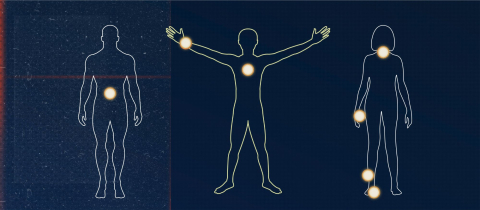Last month during a Norwegian science festival, Stephen Hawking, the famous theoretical physicist and author of A Brief History of Time said this about space travel: “It is clear we are entering a new space age. We are standing at the threshold of a new era. Human colonisation and other planets is no longer science fiction, it can be science fact”. He believes that threats to the planet including climate change and over-population are great enough that humans must explore new options. Given Hawking’s great credibility, his opinion merits serious consideration. Is interplanetary travel a real option? Government and private space agencies seem to think so, and have turned to the only planet within our reach – Mars.
Although Mars is not the closest planet to Earth (a Venus–Earth journey would be shorter), it is the only planet in our solar system that humans could conceivably inhabit, though it would not be easy. The barren desert-like planet has little of Earth’s vitality; its notoriously thin atmosphere poses some serious challenges to life – plants cannot grow, liquid water can’t easily be found on the surface, and solar radiation is a large threat. But researchers believe these problems are surmountable. Mars has a comparable temperature range to Earth, though notably more like Antarctica than Arizona. Also, after 40 years of mounting evidence from various robot missions, NASA has confirmed the existence of water on Mars, mostly in solid form under the planet’s surface. Current missions are addressing how this water could possibly be used.
"Since Von Braun, there have been 61 proposed manned missions by high-budget space agencies around the world with expected launch dates ranging from 1965 to 2030. [...] It seems that manned missions to Mars have a history of unrealistic expectations."
Inhabiting Mars is not a recent fantasy. For decades’ scientists and politicians alike have envisioned life beyond Earth. In 1952, Werner Von Braun, the famous German aerospace engineer who designed rockets critical for the Apollo missions, published his plans for getting humans to Mars called The Mars Project that proposed sending 70 astronauts to the planet by 1965. Since Von Braun, there have been 61 proposed manned missions by high-budget space agencies around the world with expected launch dates ranging from 1965 to 2030. Last year, Elon Musk, the entrepreneur extraordinaire behind Tesla, Paypal, and the independent space company SpaceX, announced an ambitious plan for getting humans to Mars by 2023. Even Donald Trump has expressed great interest in such missions and has reallocated much of NASA’s funding from earth science to solar system research, pushing the organization to get there in the next 3.5 years. It seems that manned missions to Mars have a history of unrealistic expectations.
Right now there are two main problems: the lack of technology and lack of funds. Musk’s plan mostly addresses the economic issue – it would cost 10 billion dollars to get a single human to Mars, making the possibility of any large scale colonization very unlikely. Thus his company seeks to make space technology cheaper, mostly by making infrastructure reusable. It is difficult to determine if Musk’s Interplanetary Transport System will work, since it is at a very early experimental stage and in need of further funding. But given the entrepreneur’s impressive background in business and technological know-how, it’s hard to dismiss his idea’s as being just another space fantasy.
Beyond the economic difficulties for funding research and missions, the technology necessary to get to Mars and support human life once there is not yet developed. The distance between Earth and Mars is 200 times greater than that between the Earth and the Moon and fuel requirements are immense. In order to reduce the time it would take to travel that distance, 80% of the fuel would be used as propellant, the rest would be used to support life on Mars. Cosmic radiation is also a recognized problem; researchers must determine if existing radiation shields could do the job. Musk acknowledges this problem, but his only plan to address it is to try to reduce the journey to about 80 days, minimizing exposure time. Additionally, landing on the Martian surface is a huge issue. Due to the thin Martian atmosphere, parachutes cannot be used and other means of landing have to be explored. So far, the largest object landed on Mars was the 2012 Curiosity rover weighing in at 0.9 tons, much less than any manned spacecraft. But NASA believes that solutions to these problems can be found by 2030. Both NASA and SpaceX are currently working on supersonic retropropulsion technology, which they hope will address the landing problem, but again such a solution requires significant funding.
Moreover, these are only the problems associated with the mechanics of delivering a payload from the Earth to Mars. Based on numerous human missions to the International Space Station, it is recognized that there are great physiological and psychological burdens when prolonged periods are spent in space. To get to Mars using current technology, passengers would have to endure 243 days of space travel, subjecting them to muscle and bone loss due to prolonged microgravity. Exposure to high radiation would no longer be diverted by Earth’s magnetic field, and long-term isolation, which has been shown to cause great psychological distress would pose further difficulties. NASA hopes to address these effects in the next decade by sending humans into orbit for long periods of time on preparatory missions.
Beyond the journey, actually creating a settlement on Mars will require a lot more research involving many different disciplines. Botanists (as demonstrated in the recent film The Martian), chemists, physiologists, psychologists as well as law makers will be necessary to confront the significant unknowns that face a Martian colony. Consider the great problems encountered by Europeans who colonized North America: famine, disease, and weather to name a few. That may be a pittance when compared with the problems that have to be overcome on a Mars colony. There will be a need for some kind of mechanism for extracting and using water from the ground as well as technology to produce oxygen from Mars’ limited resources.
Lots of research has already been carried out on how a space colony might function, including design of habitats, construction of inflatable green houses to grow food, and even potential safety and legal issues. Additionally, great steps have been made using artificial chambers which simulate Mars’s particular conditions. Researchers have found that it is possible for lichens and microorganisms, which are capable of photosynthesis, to live on the Martian surface. But only so much can be learned from these experiments on Earth. NASA looks to the 2020 Curiosity rover to collect important data and find new solutions.
While there is still an incredible amount of science to be done, given the high profile of supporters like Hawking and Musk, the possibility that missions to Mars may occur in the next couple of decades cannot be discounted. Earthlings may yet become Martians.

@cassandranlee







